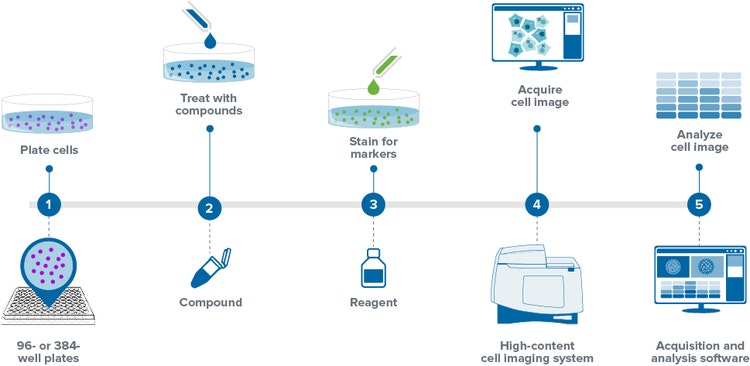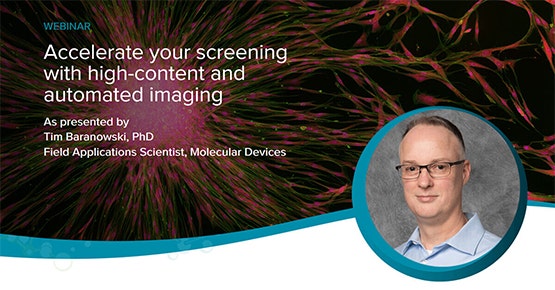
Cell Imaging & Analysis
Acquire and analyze quantitative data for cell-based model applications
Cell imaging: Acquisition and analysis
Researchers have several options in methods for imaging cells, from phase-contrast microscopy that shows intact cells to fluorescent imaging of single molecules or organelles. Cellular analysis is performed to evaluate and measure the current state of cells, such as cell integrity, toxicity, and viability and various other research applications. An integral part of cellular analysis is data collection, analysis, and export into a meaningful and useful format.
Cellular analysis workflow
Protocols for culturing, plating, and maintaining cells will vary between different cell models however, the steps below outline a general workflow for cell-based imaging assays from upstream media prep through downstream experimental analysis using a high-content imaging system and cellular analysis software.

- Plate cells into labware of choice (chamber slides, dishes, microplates)
- Treat cells – Perform cell treatments with desired compounds if part of the assay workflow
- Stain for markers – If required, label cells with the desired fluorophores (fluorescent dyes, fluorescent protein – peptide fusions, etc.
- Acquire cell image – Place the plate into the cell imaging system and start acquiring your live cell images
- Analyze cell image – Use cellular imaging analysis software to run quantitative analysis of live cell image
Accelerate your screening with high-content and automated imaging
This technical webinar will focus on high-content screening applications such as those involved in viral research, neurite outgrowth studies, and organoid models. The information provided will apply to researchers currently working with cell-based assays and doing live-cell imaging, and those looking to automate and/or increase their current imaging workflow.

Types of cellular imaging methods
Whether the demand is for a high-content and high-throughput or a simple-to-use system, our cellular imaging solutions can accommodate acquisition and analysis that suits the needs of a screening or research lab. Here, we’ve briefly described several methods in cellular imaging:
- Phase-contrast microscopy shows intact cells
- Fluorescent imaging can show single molecules or organelles
- Brightfield microscopy is useful for visualizing whole cells rapidly
- Confocal microscopy is preferred for high-quality images and 3D reconstruction of cells
- 4D live-cell imaging combines confocal with time-lapse microscopy
- Automated microscopy employs software and hardware features which ensure robust focus in every field-of-view combined with sophisticated image analysis software to generate repeatable and subjective quantitative data
Common cell-based assays and applications
Here, we’ve highlighted several cell-based assay topics from 3D cell cultures to stem cell research as well as applications for cardiomyocytes and toxicity screening.